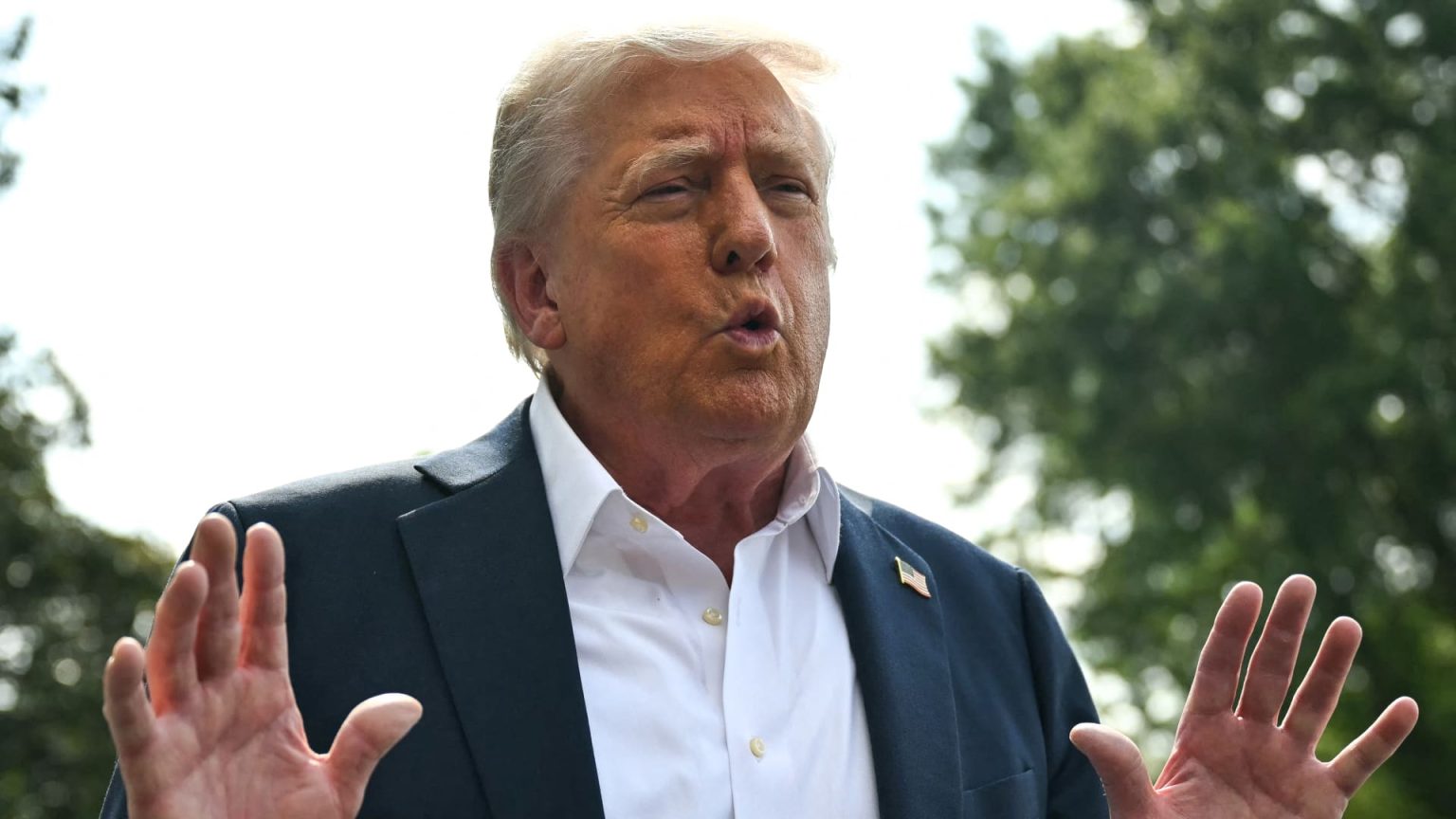In a recent announcement, President Donald Trump disclosed a preliminary trade agreement with Indonesia, which is expected to introduce a 19% tariff on U.S. exports to the Southeast Asian nation. The deal, described as significant by Trump, is reportedly contingent on Indonesia’s approval, as it includes commitments for substantial purchases of U.S. products. This development follows a similar agreement Trump previously made with Vietnam and highlights the administration’s unconventional approach to trade negotiations.
| Article Subheadings |
|---|
| 1) Overview of the Trade Deal |
| 2) Details of the Agreement |
| 3) Impact on U.S.-Indonesia Trade Relations |
| 4) Comparisons with Previous Trade Agreements |
| 5) Future Considerations and Reactions |
Overview of the Trade Deal
On a Tuesday morning in Washington, President Trump announced the formation of a preliminary trade deal with Indonesia, which he claims will initiate a 19% tariff on U.S. exports to the country. This agreement signals an intent to enhance trade ties between the nations and alter the existing trade dynamics, particularly impacting how U.S. goods are received in Indonesia.
While Trump has positioned this deal as a major accomplishment, the exact terms and approval from the Indonesian government remain uncertain. The Indonesian Embassy in Washington has yet to comment publicly on the specifics of the deal, raising questions about its official status.
Details of the Agreement
In a social media post, Trump elaborated on the deal, stating that Indonesia has pledged to purchase a substantial amount of U.S. goods, including $15 billion worth of energy, $4.5 billion of agricultural products, and an order for 50 Boeing jets. The purchase of Boeing aircraft is especially noteworthy; the Indonesian airline Garuda has been in discussions to acquire between 50 and 75 jetliners, marking a potentially significant business move.
The proposed tariff rate on Indonesian imports distinctly reduces Trump’s earlier threat of a 32% duty. The shift in stance hints at a strategic approach to trade negotiations that fosters partnerships instead of fostering conflict through heavy tariffs.
Impact on U.S.-Indonesia Trade Relations
The United States already engages in significant trade with Indonesia, with over $38 billion in goods traded between the nations in 2024. However, the trade deficit has floated around $17.9 billion, indicating a gap that this new agreement aims to address. Trump asserted that the deal would allow the U.S. access to Indonesian markets, which he emphasized had been limited historically.
The implications of this trade deal are multifaceted; if solidified, it may lead to enhanced economic cooperation and greater market penetration for American firms. Commerce Secretary Howard Lutnick expressed optimism that Indonesia would reciprocate by dropping its tariffs on U.S. goods, potentially mitigating trade barriers and building an even stronger bilateral relationship.
Comparisons with Previous Trade Agreements
The strategy surrounding the Indonesia trade deal bears a resemblance to Trump’s earlier announcement regarding Vietnam. In July, he indicated that the U.S. and Vietnam reached a preliminary agreement that involved a 20% tariff on Vietnamese imports, catching many officials by surprise as no formal confirmation had been made by Vietnam’s government at that time.
Furthermore, the U.S. has claimed progress in trade negotiations with the United Kingdom and has rolled back tariffs with China through a separate agreement. These actions depict an overarching strategy where Trump utilizes a direct communication approach to dictate trade terms, often bypassing conventional negotiation methods such as discussions and consultations.
Future Considerations and Reactions
Given the mixed reception to past agreements, the future of the U.S.-Indonesia deal remains uncertain. While proponents in the administration are touting potential economic gains, critics have voiced concerns about the lack of clarity and formal acceptance from Indonesian officials. As these negotiations develop, observers will closely monitor both countries’ responses and any adjustments to the agreement’s terms.
The ongoing dynamics of this agreement reflect a broader strategy of aligning global trade practices within the current geopolitical climate and balancing relationships with key trade partners. With anticipation swirling around how these negotiations could reshape economic relations, officials and industry leaders are eager to witness the outcomes of this potential trade deal.
| No. | Key Points |
|---|---|
| 1 | Trump announced a preliminary trade deal with Indonesia introducing a 19% tariff on U.S. exports. |
| 2 | Indonesia committed to purchasing $15 billion in U.S. energy, $4.5 billion in agricultural products, and 50 Boeing jets. |
| 3 | The deal aims to enhance U.S. access to Indonesian markets and mitigate the current trade deficit of $17.9 billion. |
| 4 | The agreement resembles prior deals with Vietnam and the UK, focusing on direct communication for negotiations. |
| 5 | Pending formal approval from Indonesia raises questions about the deal’s final acceptance and long-term impact. |
Summary
The trade agreement announced between the United States and Indonesia represents a pivotal shift in trade relations aimed at enhancing economic ties and expanding access to markets for American goods. While the potential outcomes are encouraging, the necessity for formal endorsement from the Indonesian government highlights the complexities associated with international trade negotiations. This agreement, alongside similar deals with other countries, underscores the administration’s distinctive approach to trade and its implications for future diplomatic relations.
Frequently Asked Questions
Question: What is the significance of the 19% tariff on U.S. exports?
The 19% tariff is intended to facilitate better access for U.S. products in Indonesia, potentially enhancing business opportunities while reducing existing trade deficits.
Question: What has Indonesia committed to purchasing from the U.S.?
Indonesia has committed to purchasing $15 billion in U.S. energy, $4.5 billion in agricultural products, and 50 Boeing jets as part of the preliminary trade deal.
Question: How does this deal compare to previous trade agreements made by the Trump administration?
This deal follows a similar pattern to previous agreements with Vietnam and the UK, emphasizing direct communication rather than traditional negotiation processes.


